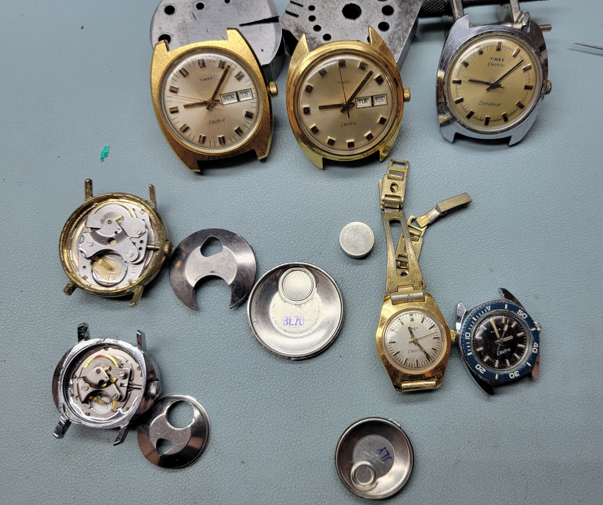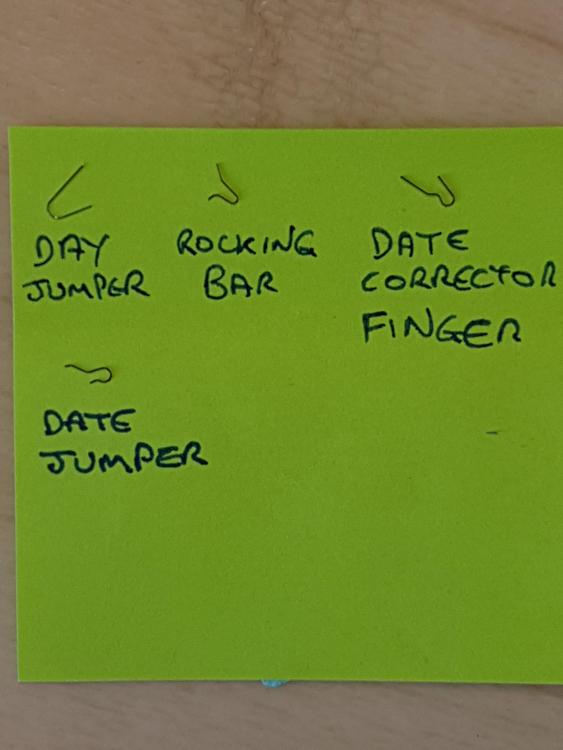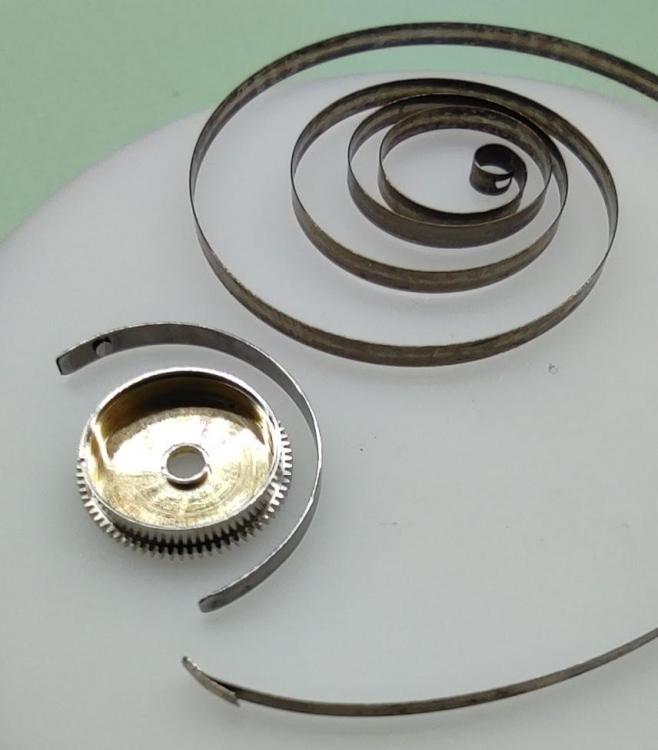Leaderboard
Popular Content
Showing content with the highest reputation on 01/31/22 in all areas
-
Hi Hector attached is the mod 50, within the text there is a drawing showing how to remove the stem. cheers 214788740_50(1).pdf2 points
-
Then Seiko came and taught'em how to make a calendar without any spring And give to me the associated income and reputation2 points
-
2 points
-
I agree with @Nibbler and @jdm - if you don't have the skills yet, leave the smaller ones in place. I really struggled the first time I refitted them. The blob of oil in the centre of the jewel end up all over the place. I can now refit them easily enough (usually) but do it under a stereo microscope, and I don't oil the jewel before fitting the spring. As I don't have an automatic oiler, I sharpened an old oiler to a point which I use to feed oil through the jewel hole. Capillary action takes the oil through the hole. I then have to clean the hole side with some Rodico.2 points
-
For me it's JLC 426 and its several derivatives. They never run well, absolute struggle to get decent amplitude, then there's a ~80 degree drop from horizontal to vertical. Set the escapement to the living limits. Change mainspring thickness by 0.005mm and it rebanks, flatten pivots to get the horizontals to drop off. But the new spring is 10mm shorter/longer and it doesn't hit the power reserve anymore (for those with Bergeon mainspring winders this is like a 000). Luckily when I worked on these it was for a manufacturerer and they'd eat it if it took 40 hours to get a 6 position delta of 40s. And it often took that long. Then you deliver, the contrôleur sticks it in the demagetizer and whoooop back it comes because it now has 45s delta. Then we'd charge for the extra 12h to get it to 40 again haha. Worked on many 101s and 104s, way fewer issues. Made staffs, pinions, stems, setting springs, all kinds of stuff for them. Actually the JLC 103, oval movement between the 104 and 426, had to vibrate a hairspring with a beat of 22,200. They were more lenient on the rate there (still under 40s!). Also rebuilt the mainplate in steel on one of those. For regular movements I actually hate the ETA 2892, and way more the 2000. The 2000 is an absolute anomaly, even if I don't like the 2892 it's a good movement.1 point
-
1 point
-
This uses a spring like a pincer to hold the winding stem in place. If you look through the 2 holes in the plate, you will see the spring. Take a straight tweezer and insert the tips, one in each hole, within the pincer and then wedge a peg wood between the tweezers to force the jaws of the pincer apart and release the stem.1 point
-
Good for you in making such a tool. One slip from those pins and the back will be damaged.1 point
-
Any watch that has Timex on it all bloody crap movements in my opinion. Russian watch movements back in the 70's and 80's were also sods to repair rough and ready finish on them. Give me a high end watch to work on any day.1 point
-
I had a 40s vintage Certina where I was not the first amateur inside. Nothing intrinsically challenging about the movement as a movement, so much as the history of that particular movement and my relative naiveté when I tore into it. Mainspring was wrong, balance and/or fork were wrong, and I still haven't made it happy. On top of that, the crystal was super weird and special, and that was a whole thing on its own. It's currently in the "when I have more skill/tools" box.1 point
-
1 point
-
Funny you should mention the Citizen 5204. I too have mentioned to people what a pain it was with all those springs in the day/date. It's the most complicated non-chronograph watch I've worked on. I made a note when I was cleaning it to remind me which went where. I only ever buy watches with at least 15 jewels, I've never worked on one with less.1 point
-
1 point
-
1 point
-
Many here will have their tales of woe with movements but for me in regard to performance is movements with pin lever escapements. Once serviced they run just fine BUT on a timegrapher a nice snow blizzard is the picture. Example: I recently serviced a Ingersol pocket watch for a friend which is a very simple movement but a single plate holds all of the wheels and balance. So really fiddly to assemble but after a clean and lubrication and running it keeps really good time but the reading on the timegrapher is atrocious. But the important part is the customers are pleased.If I was to try and explain about a timegrapher reading and beat error etc their eyes would just glaze over.1 point
-
Thank you for your introduction and welcome to this friendly forum. We all look forward to your contributions and continued involvement. You are going to need a very deep wallet if you take this up in a serious way.1 point
-
The practice of UK Time, aka Timex Dundee, luming dials with radium continued on in to the 1950s and 1960s. Furthermore the company was not averse to dumping unwanted radioactive dials by the thousand, straight in to the North sea. This is from a Sunday Post article on the subject. So it would appear that radium waste was 'disposed of' both in the North sea and the Atlantic for many years. As to the danger of an individual dial, I would suggest that this is relatively low. I would however be a lot more concerned if one of those drums were to wash up on the shore. The only way to know for sure if your dial has radium would be to check it with a geiger counter, since the zinc based material in the lume degrades over time and it looses its luminous properties. This means that while the lume is still radioactive, (the most stable isotope being radium-226, which has a half-life of 1600 years and decays into radon gas, also radioactive), it is no longer luminous, so you can't simply assume that if it doesn't glow, then it isn't radioactive. The watch you show above, is probably from the late 1950s, or at least before 1963, because it doesn't have a date code on the dial. The case back style suggests 1950s rather than 1960s. If I were to take a guess I would say 1959. Some earlier Timexes have an ink-stamped date code on the inside caseback consisting of one letter and one number. The numeral denotes the year of manufacture as follows: 1959-8, 1960-7, 1961-6, 1962-5 1963-4 1964-3 1965-2 1966-1 1967-9. So if you look inside the case on the case back, there may be an inked stamp mark with some letters on it that gives a more exact date. These however have often been cleaned from or rubbed off the case back. It may have radium, or it may simply have coloured hands, or it may once have had radium and this has been replaced at some stage in the past. Whatever the story is, I would have little major concern about the lume, so long as you are careful when servicing the watch. Read through the rest of this thread for more info on this subject. The levels of radiation present are likely to be perhaps a few times background. Don't ingest the lume, don't sniff the dial, wash your hands after handling it and you should be fine.1 point
-
Yes that's what I was talking about. Providing they make a modern replacement mainspring for your watch you should be able to.1 point
-
That sounds like a fair estimate to be honest, if the balance needs repairing. Did he already take a close look at the watch and describe the work he thinks is necessary? You could get a quote for the same work from somewhere else for comparison. Alternatively, try to find a running example of the same movement. If you swap it for something non-original, you will destroy its value. Your final option, as you are here on this forum, is to do it yourself, but you are looking at much more than 350$ for the tools alone, then you need education and a lot of practice on top of that.1 point
-
1 point
-
1 point
-
Magnetism. Why is the compass unreliable? Mine is the jewelled model sapphire on hardened steel point and seems to work very well. I’ve just tested the compass on my Samsung phone and the compass detected magnetism from the phone so I’m not sure that I’d want to use the phone to detect magnetism. I’m not against new methods and I don’t know anything about the app so don’t take me wrong, I’m not saying the phone is a bad method. I can only speak about my phone that is definitely magnetic and I would like to hear yours and other’s opinions. P.S. Lighter fluid. Modern lighter fuel is contaminated with a small amount of oil, making lighter fuel a very poor degreaser. Very small particles of oil will be left on any part that you try and clean when using this substance. If you apply oil to the surface of anything that has been washed in lighter fuel, the oil will spread.1 point
-
Chexk Watchpart.org.Uk, if still active, it puts in direct contact with individual sellers, repairman who mostly scavange parts off of scraps to sell, you get the genuine parts. Good luck1 point
-
Firstly do not be shy to post on this forum, if you want advice please ask the members are would genuinly help you with any question no matter its content. Regarding shops, Pawn shops I think would be on the more expensive side but the thrift / charity shops would be where to look, Garage sales, Car boot sales but be careful what you buy because a lot of quartz/battery watches get dumped in these places but you will find a few Gems.1 point
-
1 point





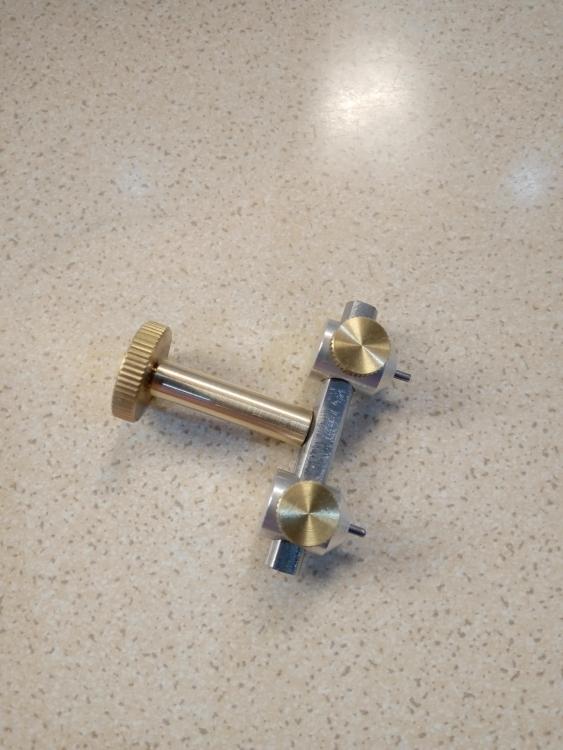
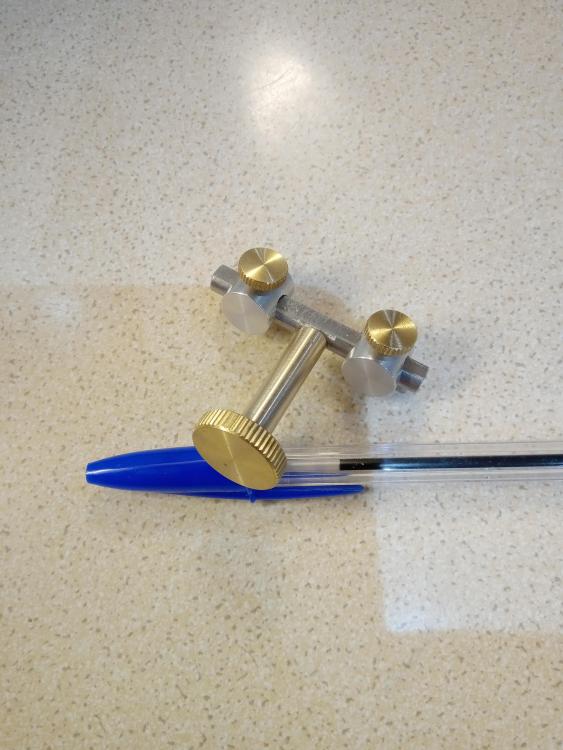

.thumb.jpg.d73caeeefc851160a57528d65d21b05b.jpg)

